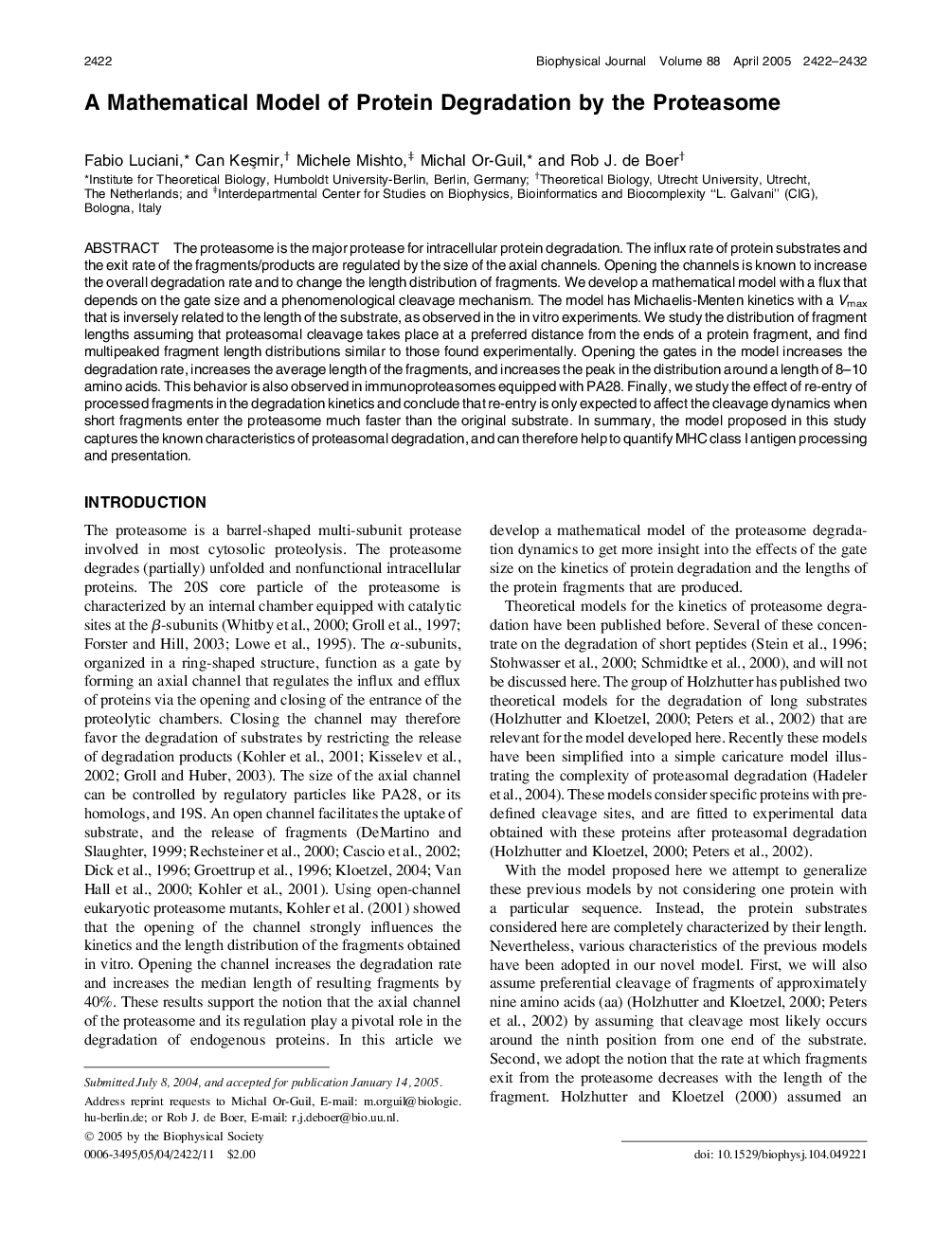| Article ID | Journal | Published Year | Pages | File Type |
|---|---|---|---|---|
| 1959539 | Biophysical Journal | 2005 | 11 Pages |
The proteasome is the major protease for intracellular protein degradation. The influx rate of protein substrates and the exit rate of the fragments/products are regulated by the size of the axial channels. Opening the channels is known to increase the overall degradation rate and to change the length distribution of fragments. We develop a mathematical model with a flux that depends on the gate size and a phenomenological cleavage mechanism. The model has Michaelis-Menten kinetics with a Vmax that is inversely related to the length of the substrate, as observed in the in vitro experiments. We study the distribution of fragment lengths assuming that proteasomal cleavage takes place at a preferred distance from the ends of a protein fragment, and find multipeaked fragment length distributions similar to those found experimentally. Opening the gates in the model increases the degradation rate, increases the average length of the fragments, and increases the peak in the distribution around a length of 8–10 amino acids. This behavior is also observed in immunoproteasomes equipped with PA28. Finally, we study the effect of re-entry of processed fragments in the degradation kinetics and conclude that re-entry is only expected to affect the cleavage dynamics when short fragments enter the proteasome much faster than the original substrate. In summary, the model proposed in this study captures the known characteristics of proteasomal degradation, and can therefore help to quantify MHC class I antigen processing and presentation.
